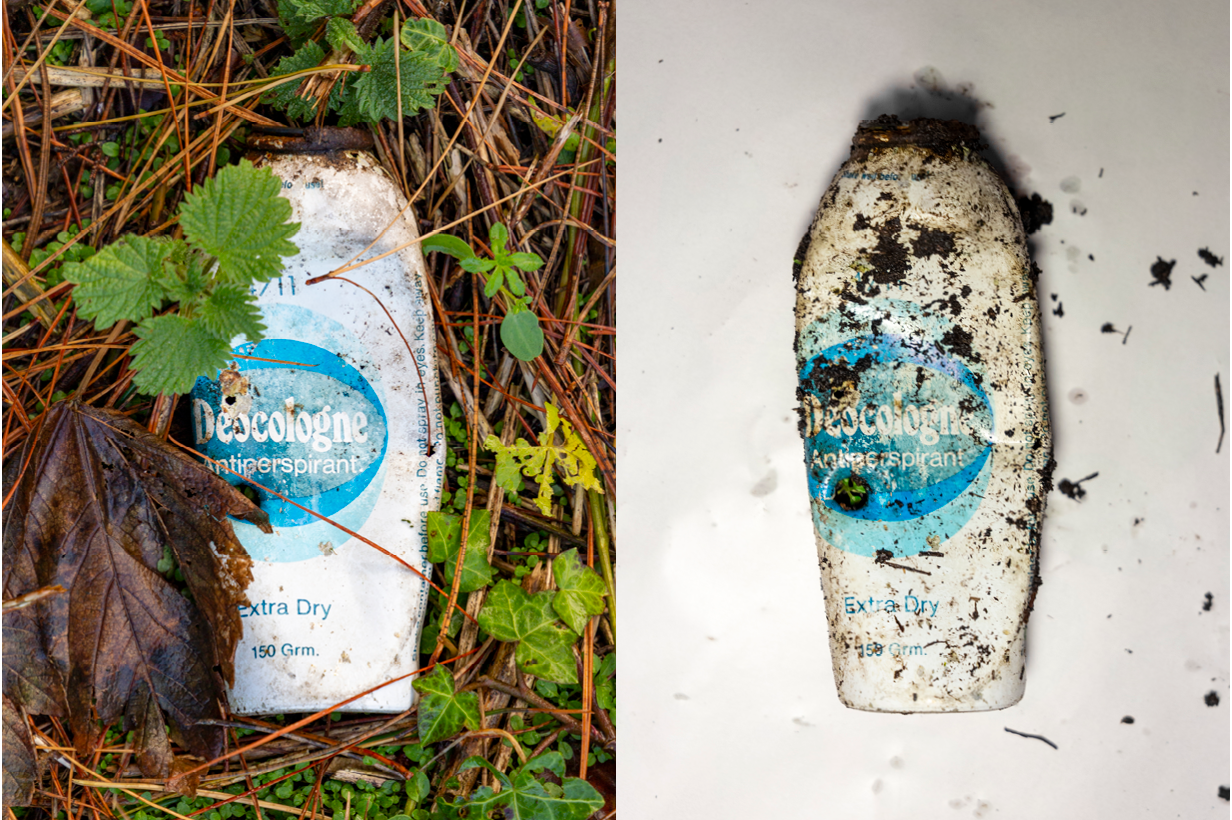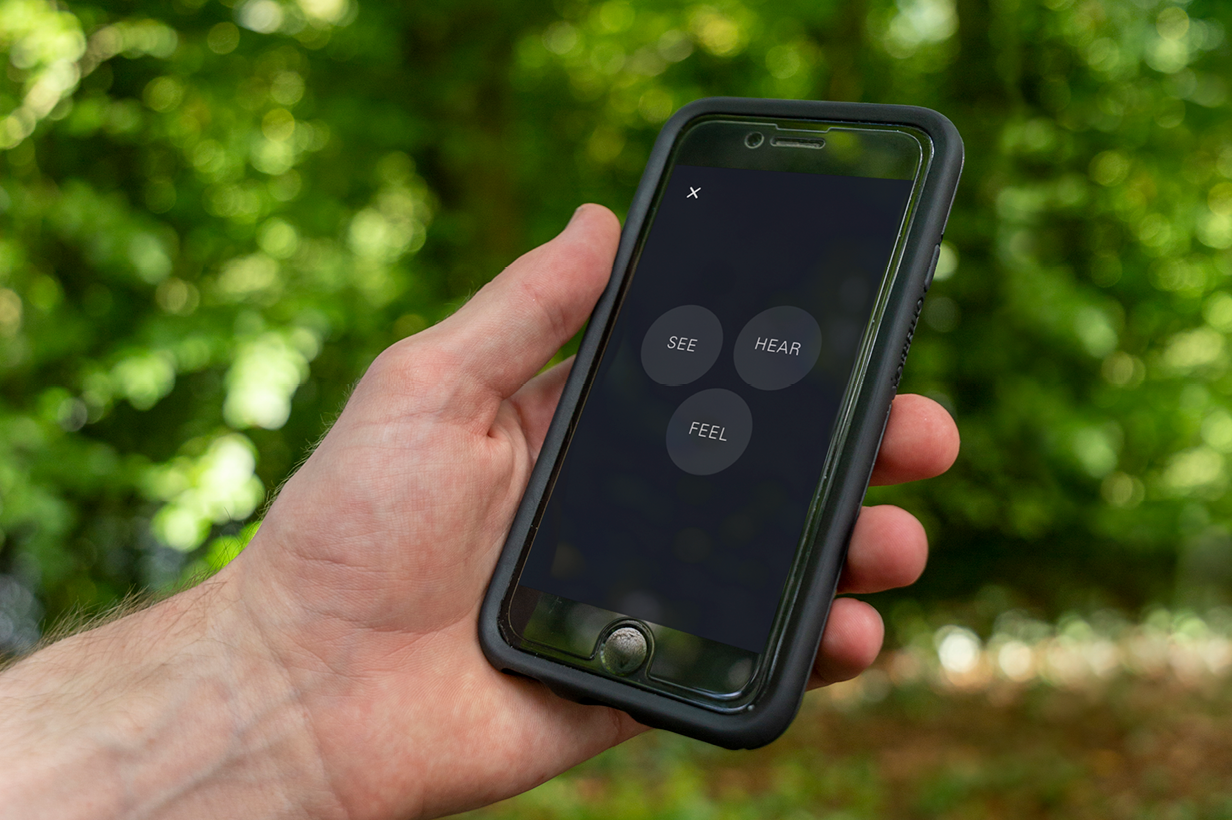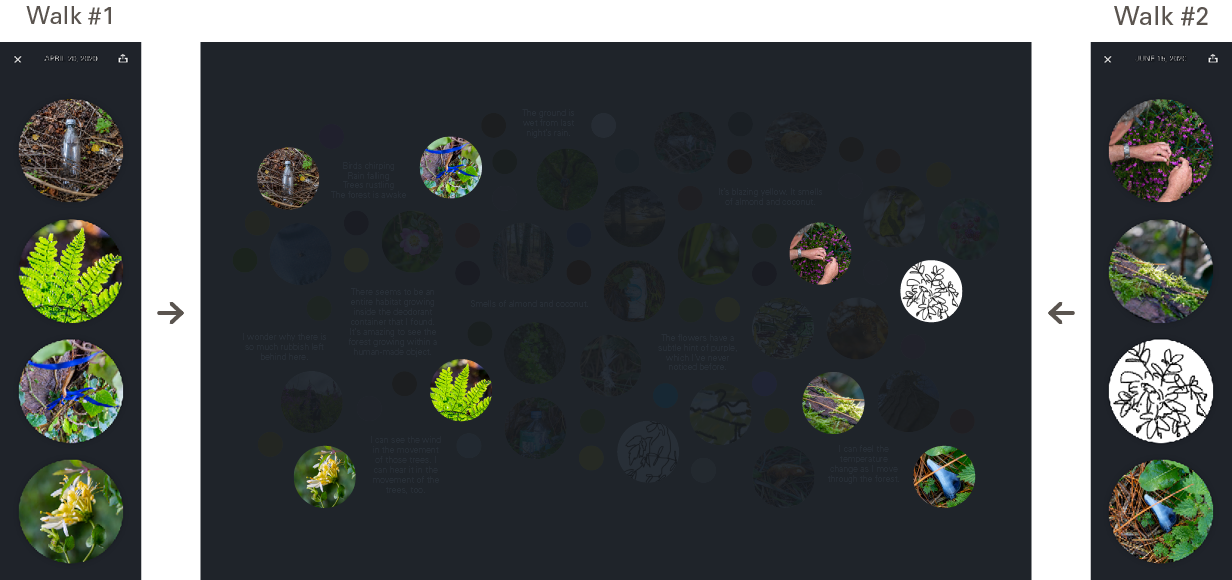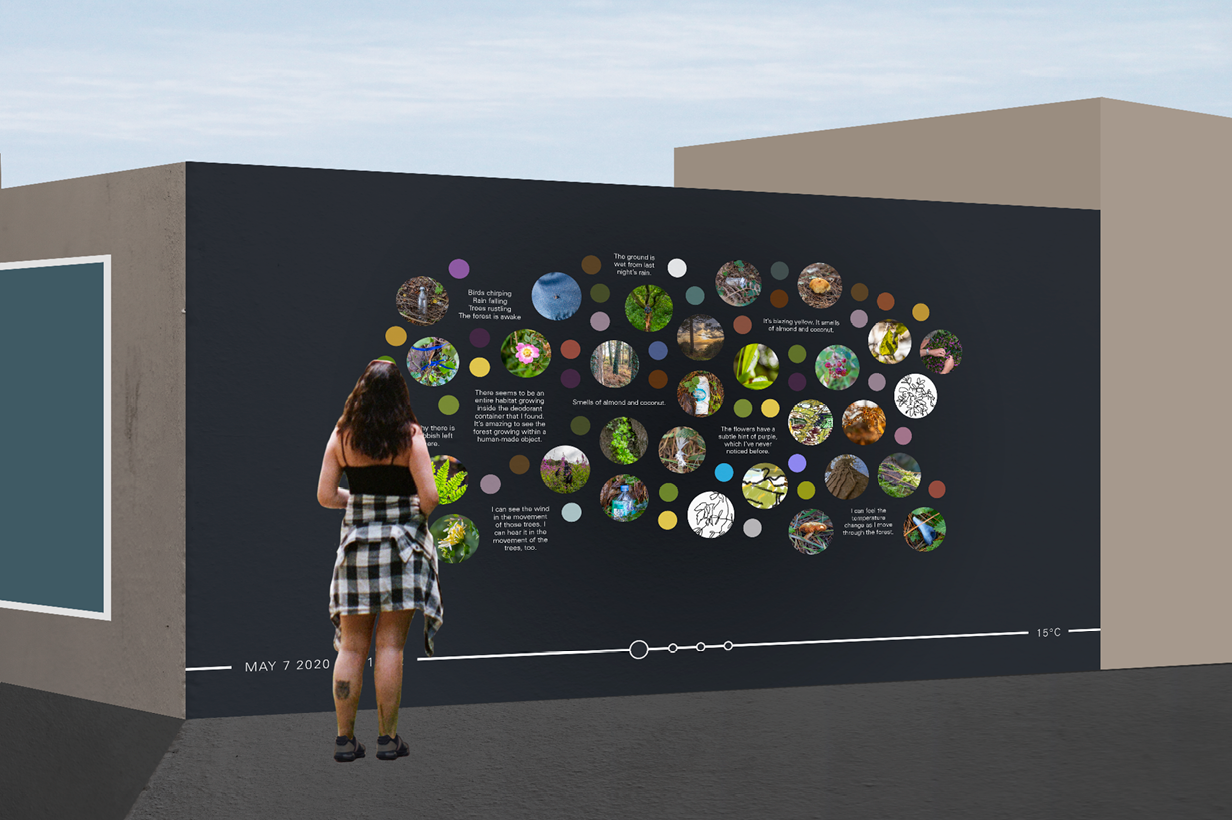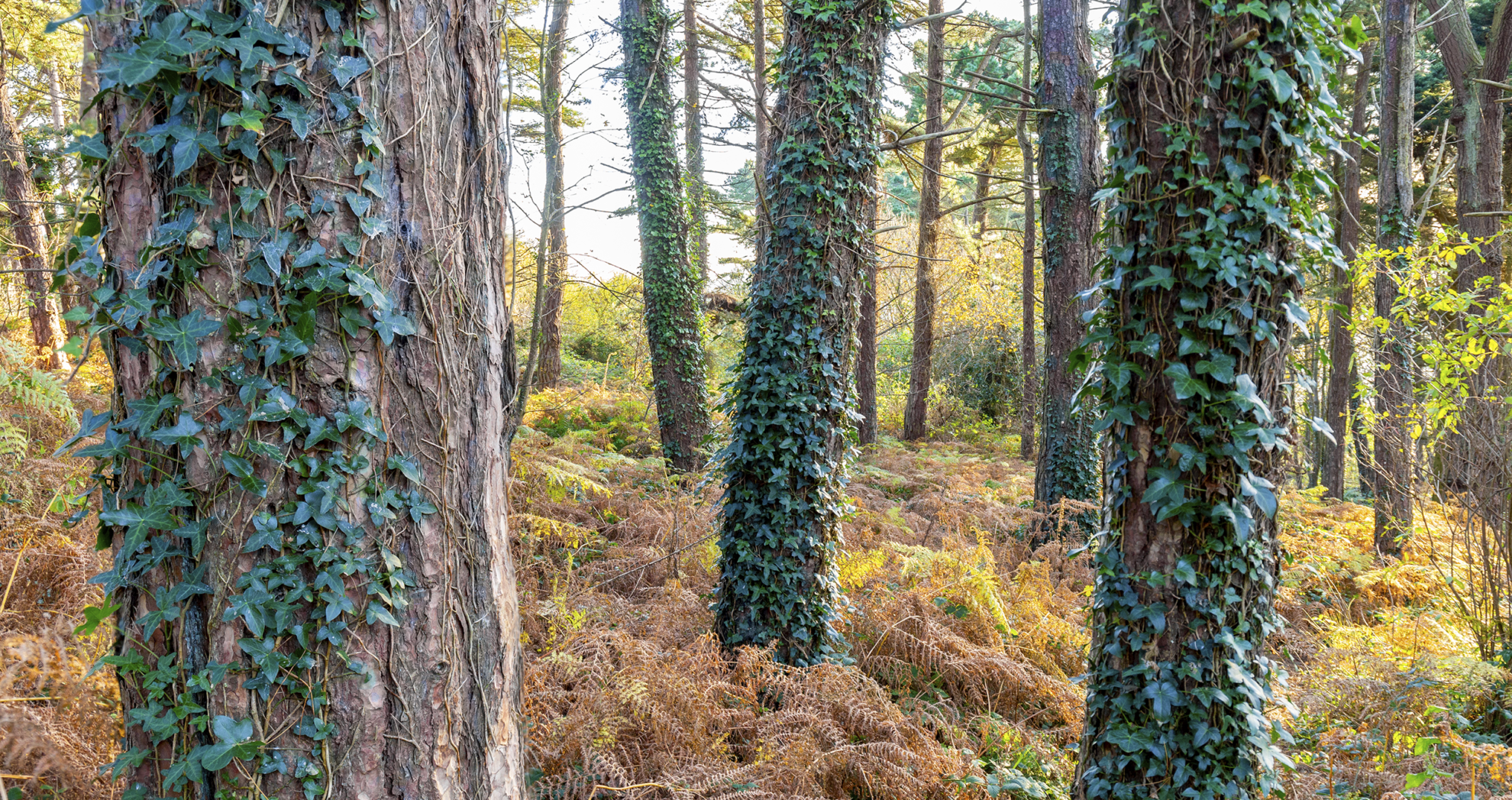
If the Woods Could Walk
Making visible the coexistence of nature and culture
This design research project investigates the role of visual communication in making visible the coexistence of nature and culture in Ireland’s woodlands. This project is an experience design with an environmental focus, and the primary interface of the project is the forest. Using a small woodland in Howth as a case study, the research looks to examine how walking and sensory engagement can be used to activate place and to facilitate immersion in the world. I have designed the system and its touch points, but the outcome requires participant presence and engagement.
As a designer, I found a need for a system that would give participants the tools to immerse themselves in nature and facilitate activation of all of their senses. Further, I saw a need for a design system that would allow participants to engage with the forest in a way that makes visible the interconnectedness of nature and culture in a relational world. Using sense-engaging, multimodal design, the project presents opportunities for participants to enter into dialogue with the forest.
While the research and conceptualisation of this project is based on my own subjective experiences within nature, the design outcome aims to be unmediated, both in terms of visual design and content. As part of the design system, I have designed an app that will act as a tool to encourage participants to perform their own ethnographic walk in the woods. The app features different ways for the participant to use their mobile device as an extension of themselves to interact with the forest, record their observations, and connect to the network of participants.
These features allow participants to record nodes, which are evidence of participants using the design system to look, hear, and experience with nature. The inclusion of circular nodes as a consistent design element is to allow for the visualisation of a decentralised network that represents the nonlinearity and interconnectedness of experience in a relational world.
The nodes collected and recorded during a participant’s walk will be recorded as part of an interactive database that requires further presence and engagement. The database will be accessible through the project’s website and also displayed in Howth Village. This place becomes an ongoing performative space that visualises a network of nodes and allows participants to become part of a community. This database acts as a record for the participant’s experience and also of the forest.
A participant’s experience may begin by interacting with the database or with the app. The database’s purpose is to act as a collective memory, but it also intends to be an activist piece that introduces participants to the project and invites them to contribute to the network by embarking on their own walk in the woods.
The project is categorically a piece of design activism, as it presents information and pathways for environmental engagement and awareness, rather than proposing definitive solutions. This system gives participants the tools to interact with the forest and to collect elements of their walk, thus allowing them to be immersed in nature in a participatory manner. Further, the design system gives participants the tools to connect with other participants, revealing patterns that exist within experiences and making visible the interactions and interconnections that exist within the world.
